
The Battle of Heligoland Bight was the first naval battle of the First World War, fought on 28 August 1914, between ships of the United Kingdom and Germany. The battle took place in the south-eastern North Sea, when the British attacked German patrols off the north-west German coast. The German High Seas Fleet was in harbour on the north German coast while the British Grand Fleet was out in the northern North Sea. Both sides engaged in long-distance sorties with cruisers and battlecruisers, with close reconnaissance of the area of sea near the German coast—the Heligoland Bight—by destroyer.

Admiral of the Fleet Sir Reginald Yorke Tyrwhitt, 1st Baronet, was a Royal Navy officer. During the First World War he served as commander of the Harwich Force. He led a supporting naval force of 31 destroyers and two cruisers at the Battle of Heligoland Bight in August 1914, in which action the 1st Battlecruiser Squadron under Sir David Beatty sank three German cruisers and one German destroyer with minimal loss of allied warships. Tyrwhitt also led the British naval forces during the Cuxhaven Raid in December 1914, when British seaplanes destroyed German Zeppelin airships and at the Battle of Dogger Bank in January 1915, in which action Tyrwhitt again supported Beatty's powerful battlecruiser squadron.

HMS Badger was an Acheron-class destroyer of the Royal Navy that served during the First World War and was sold for breaking in 1921. She was the eighth Royal Navy ship to be named Badger, after the mammal of the same name.
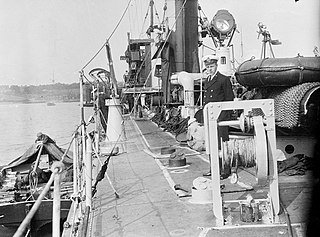
HMS Laforey was the lead ship of her class of destroyer built for the Royal Navy. Launched a year before the First World War began, she was attached to the Dover Patrol. Laforey saw action in several engagements with German torpedo boats, including the Battle off Noordhinder Bank and the Action of 17 March 1917. Laforey was sunk in 1917 by a British mine after escorting several freighters to France. She was named for Francis Laforey, captain of HMS Spartiate at the Battle of Trafalgar in 1805.

HMS Hydra was one of 20 Acheron-class destroyers built for the Royal Navy in the 1910s. Completed in 1912, the ship participated in World War I and was sold for scrap in 1921.
HMS Lizard was an Acheron-class destroyer of the British Royal Navy. She is named for the Lizard peninsula in the county of Cornwall in England. and was the twelfth ship of the Royal Navy to bear the name.
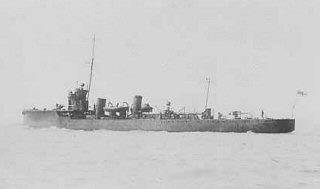
HMS Acheron was the name ship of the Acheron-class destroyer of the British Royal Navy. She is named after the River Acheron, believed in Greek Mythology to be a branch of the River Styx. She was the fifth ship of the Royal Navy to bear the name.

The Harwich Force originally called Harwich Striking Force was a squadron of the Royal Navy, formed during the First World War and based in Harwich. It played a significant role in the war.

HMS Lurcher was a modified Acheron-class destroyer, named after the lurcher-type dog, and the fifth ship of the Royal Navy to bear the name; when new she was the fastest ship in the Royal Navy.

HMS Firedrake was a modified Acheron-class destroyer, named after the firedrake of Teutonic mythology, and the sixth ship of the Royal Navy to bear the name.
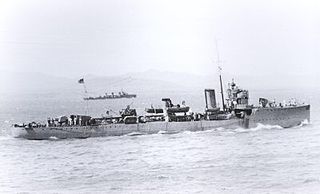
HMS Phoenix was an Acheron-class destroyer of the British Royal Navy. She is named for the mythical bird, and was the fifteenth ship of the Royal Navy to bear the name. She was the only British warship ever to be sunk by the Austro-Hungarian Navy.

HMS Ariel was an Acheron-class destroyer built in 1911, which served during the First World War and sank in 1918 after striking a mine. Named after Shakespeare's "airy spirit", or the biblical spirit of the same name, she was the tenth and last ship of the name to serve in the Royal Navy.

HMS Beaver was an Acheron-class destroyer of the Royal Navy that served during the First World War and was sold for breaking in 1921. She was the ninth Royal Navy ship to be named Beaver, after the mammal of the same name.

HMS Druid was one of 20 Acheron-class destroyers built for the Royal Navy during the 1910s. Completed in 1912 the ship served during World War I and was sold for scrap in 1921.

HMS Jackal was an Acheron-class destroyer of the Royal Navy that served during the World War I and was sold for breaking in 1920. She was the seventh Royal Navy ship to be named Jackal, after the predatory mammal of the same name.

HMS Hind was an Acheron-class destroyer of the Royal Navy that served during World War I and was sold for breaking in 1921. She was the seventeenth Royal Navy ship to be named after the female deer.
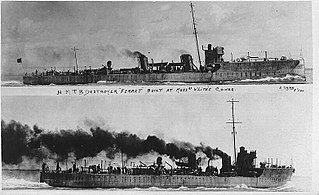
HMS Ferret was an Acheron-class destroyer of the Royal Navy that served during World War I and was sold for breaking in 1921. She was the sixteenth Royal Navy ship to be named after the domestic mammal Mustela putorius.
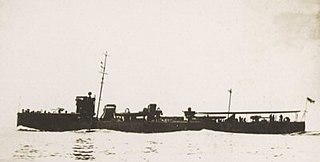
HMS Forester was an Acheron-class destroyer of the Royal Navy that served during World War I and was sold for breaking in 1921. She was the ninth Royal Navy ship to be named after the traditional craft of forester.
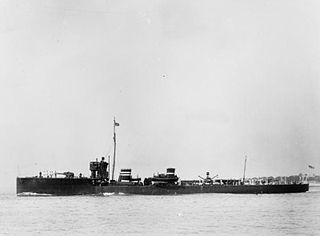
HMS Lapwing was an Acheron-class destroyer of the Royal Navy that served during World War I and was sold for breaking in 1921. She was the seventh Royal Navy ship to be named after Vanellus vanellus, the northern lapwing.

HMS Sandfly was an Acheron-class destroyer of the Royal Navy that served during World War I and was sold for breaking in 1921. She was the seventh Royal Navy ship to be named after the small biting fly of the same name.



















